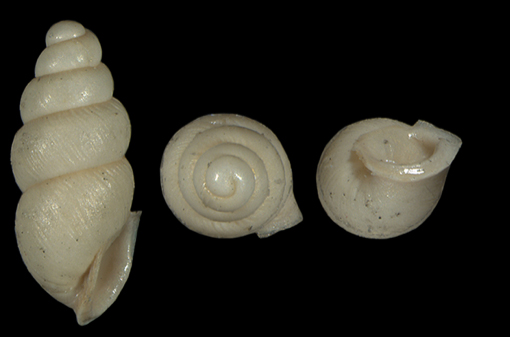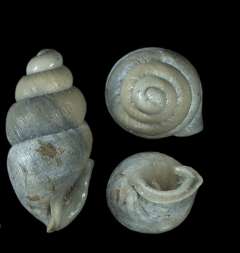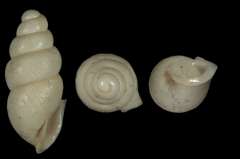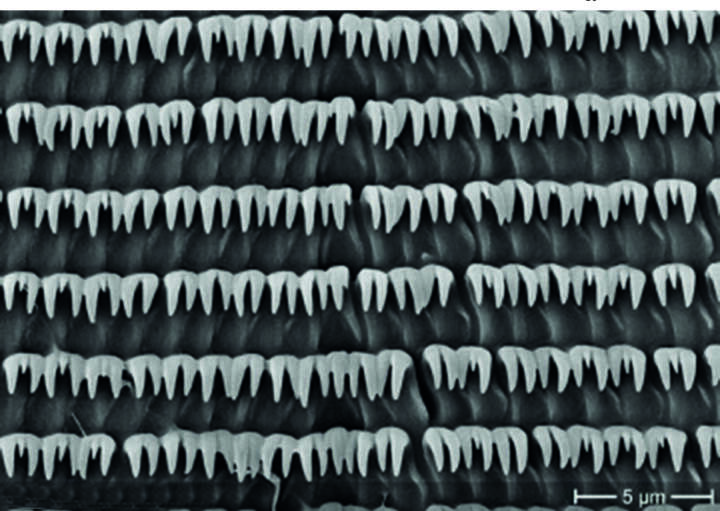Miniature Snail in a Rock Sandwich
First fossil record of thorn snails in the southern United States
Researchers from the USA and Switzerland, including Senckenberg scientist and first author Dr. Adrienne Jochum, have described the first fossil Carychium land snails from Florida. The rock layer containing the snail fossils, which are only a few millimeters in size, was accidentally uncovered during construction work and dates from the Pleistocene period between 2.58 million and 11,700 years ago. In their study, published in the open-access journal “ZooKeys,” the scientists also describe a previously unknown carychiid fossil species.
The tiny snails of the genus Carychium with a maximum height of 2.5 millimeters and a width of 1.5 millimeters are known mostly east of the Mississippi River in the USA and from eastern Canada, Mexico and Jamaica as well as in sheltered humid habitats in Central America to Panama. “However, unlike the extant species, fossilized thorn snails are rarely found east of the Mississippi River. In our recent field work we have now provided the first fossil record of the genus in the southeastern United States, as well as the first fossil record ever for the species Carychium floridanum,” explains Dr. Adrienne Jochum of the Senckenberg Research Institute and Natural History Museum in Frankfurt and the Natural History Museum in Bern.
During the construction of a track bed for the Brightline railroad, which will connect Port Canaveral with Orlando International Airport, civil engineers accidentally came across a one-meter-thick layer of fossilized non-marine gastropods between two marine shell beds. “This ‘rock sandwich’ was formed during the Pleistocene, a geologic era characterized by repeated glaciations, climate changes, and fluctuations in water level that greatly influenced and shaped the region around present-day Florida. The shell layer is sandwiched between rock layers from the Lower Pleistocene, 2.58 to 0.77 million years ago, and the Upper Pleistocene, 140,000 to 120,000 years ago, and contains 14 freshwater and 28 terrestrial snail species.”
Among them is the snail Carychium floridanum, whose current representatives still live in humid, forested, and undisturbed habitats in central and northern Florida. The researchers also described a new species, Carychium nashuaense, which is less than 1.6 millimeters long and was previously unknown to science.
“To dislodge the fossil miniature snails from the rock layers, we first washed them through a graduated series of sieves. Next, 32 Carychium shells were culled under a microscope from a mixture of other mollusks and rock debris. A high-resolution X-ray tomograph helped us examine the spindle structure inside the fragile fossil shells and compare them with 3D reconstructions of the inner shell of still-living thorn snail species from the southeastern U.S., Mexico, Central America, and Jamaica,” explains Jochum.
While the design of the inner shell structure of Carychium floridanum has changed little from the Pleistocene to the present, the shell structure of Carychium nashuaense suggests a relationship with Central American Carychium relatives. “We suspect that the spread of the snails occurred via birds, mammals, and reptiles, who transported the small snails in their guts, fur, or feathers to the wetlands from which the alluvial sediments in the rock layer we studied originated. The subsequent mixing with other members of the genus led to the emergence of new species,” adds Jochum in conclusion.
Publication
Jochum A, Bochud E, Haberthür D, Lee HG, Hlushchuk R, Portell RW (2023) Fossil Carychiidae (Eupulmonata, Ellobioidea) from the Lower Pleistocene Nashua Formation of Florida, with the description of a new species. ZooKeys 1167: 89-107.
https://doi.org/10.3897/zookeys.1167.102840






